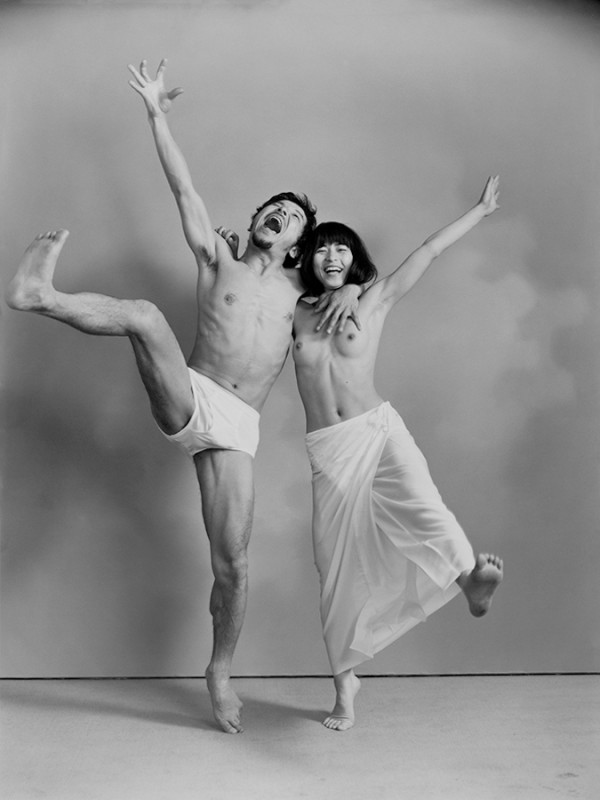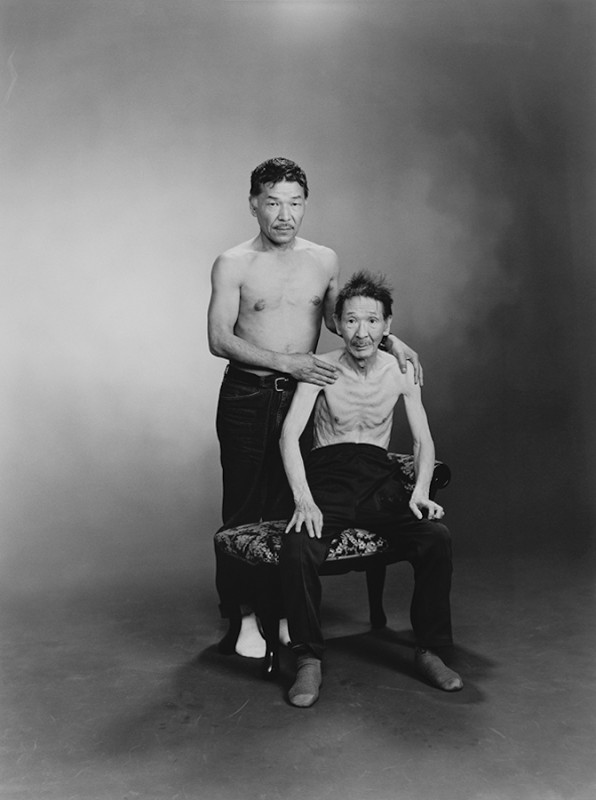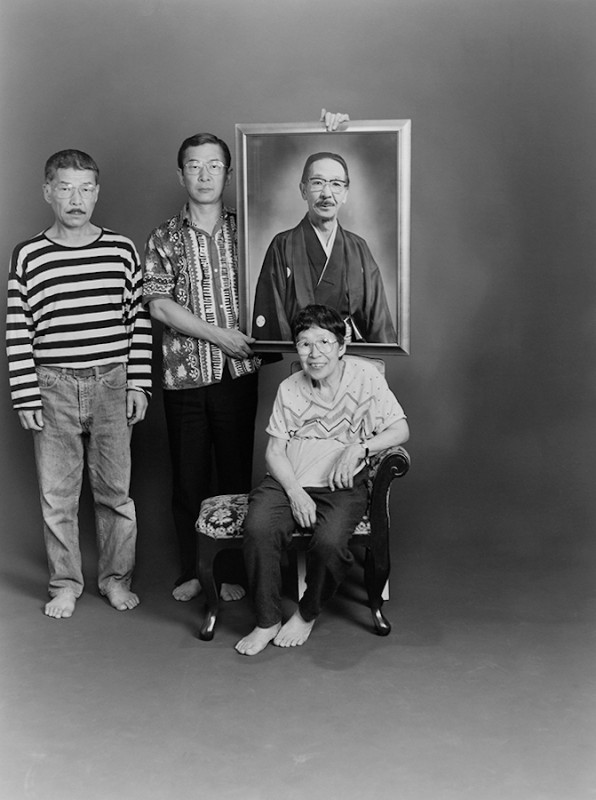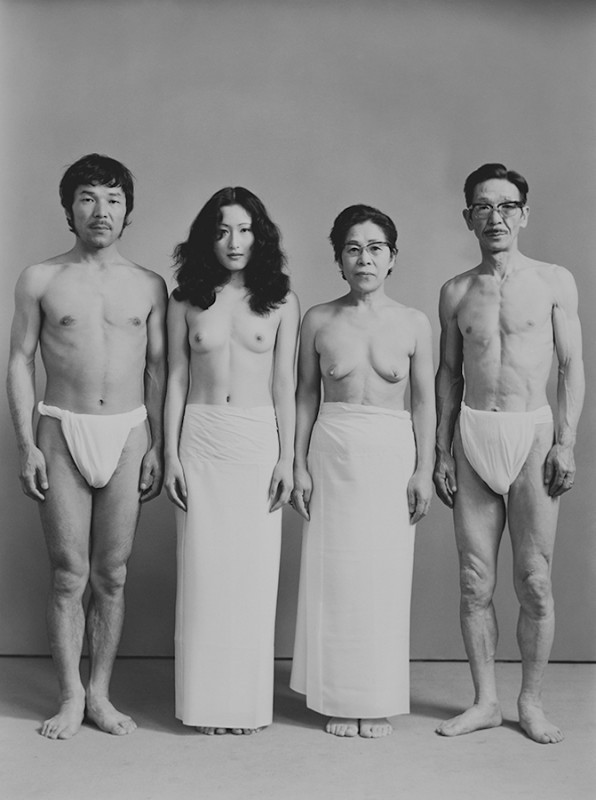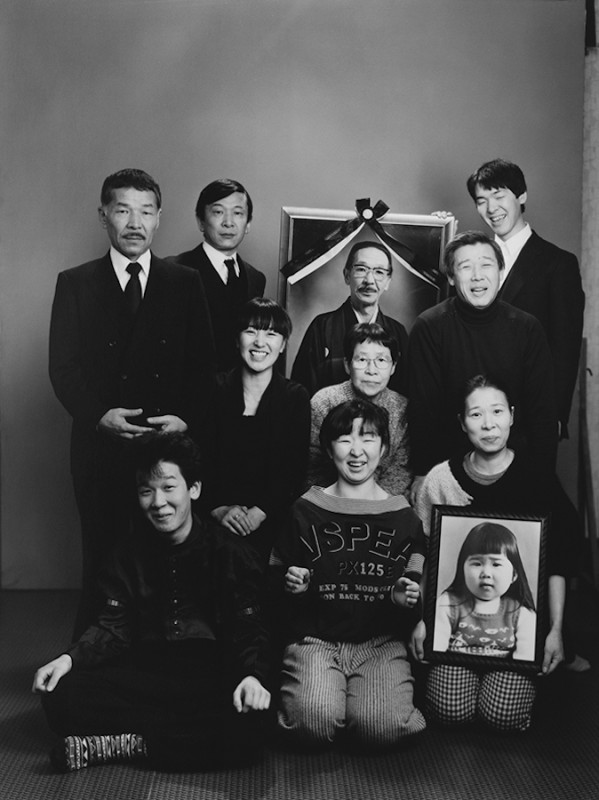Family
Family
Masahisa Fukase
September 30, 2019

To this day, Masahisa Fukase is one of the most renowned – and due to his imagery, most radical – Japanese photographers of his generation. Born in 1934 into a family of photographers in Bifuko, Hokkaido, Fukase lived in Tokyo as of the fifties, though he returned regularly to the family home, where his parents ran a successful photo atelier. The now re-issued photo book opens with a picture of that family home taken in 1974, and closes with a motif of the same building taken in 1990: the family business has ceased to function, the windows are closed, and the lettered awning has been removed. Between the two images in the series are pictures of the family members: in group photos, as couples, alone. We see people growing older and disappearing: after their deaths, his father and niece only appear as framed portraits within the family album. However, in addition to this, there are other unusual features: Fukase's wife, Yoko, disappears from the group portrait, though she is then “replaced” by an acting student, keeping the space for her open. The separation from his wife was a dramatic experience for the photographer, which he processed in, among others, his best known and most intense photo book, Ravens (1986).
And there are other differences to the classic family picture: individual family members are shown naked or in their underwear; and at times those portrayed are turned away from the viewer, or only certain of the family members are facing forward. These irregularities repeatedly interrupt the chronology, and are the photographer's attempt to counter the inevitable passage of time with humour. And these variations also give more space for interpretation and empathic consideration. As a result, this apparently private family chronicle is transformed into a general study of family, origins and belonging.
Kazoku (Family) was the last of the photographer's self-published books. A serious fall in his favourite bar led to severe brain trauma a year later, which he was unable to recover from and ended with his death in 2012. Consequently, Family became a private legacy – the photographer himself slowly disappeared from photographic history, while his oeuvre gradually gained appreciation. Even now, nearly thirty years after its first appearance, Family has lost none of its original, special magic.
Masahisa Fukase: Family/Kazoku
96 pages, 34 black and white pictures
31 x 23 cm, Japanese/English, Mack Books
A special edition is also available.
Masahisa Fukase+-
Masahisa Fukase was worn on February 25, 1934 into a family of photographers who had run a studio on Hokkaido – Japan's second largest island – for three generations. Even after finishing his training and moving to Tokyo, frequent visits kept the photographer in close touch with his family, and gave him the opportunity to take unusual family portraits. An interaction with himself and his immediate surroundings is at the centre of Fukase's work. To this day, his experimental photography essays are considered among the most significant artistic works coming out of Japan.
Fukase died on June 9, 2012, though his work already came to an end in 1992 after a bad fall that led to severe brain trauma. Exhibitions and new editions of his books have been responsible for the rediscovery of the photographer and his work in recent years. More

